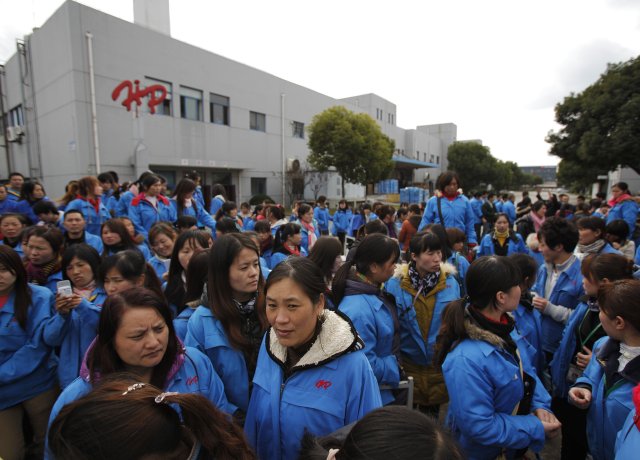
There is a lot of discussion about the nature of the Chinese economy and its developing role in global capitalism.
Much of the debate has focused on the tensions between a seemingly declining United States and rising China ― and possible changes in the global distribution of power.
In the context of a global domination of US-backed neoliberalism, the “Chinese model” has been put forward by some as a possible alternative. However, not only is China's rise far from inevitable, its “model” has its own contradictions ― as the rise of labour struggles helps reveal.
The Chinese economy has grown considerably since the 1980s. This can largely be attributed to low wages, the development of an export-oriented manufacturing sector and the decline of investment in the “real” economy (rather than financial sector) developed economies of the West.
The global financial crisis led to a big rise in government stimulus spending in China to maintain exports. This raised inflationary pressures throughout the Chinese economy.
One key problem with the stimulus spending was that it did not come with regulations ensuring businesses invest in “useful production”. This allowed the stimulus to be spent on financial speculation ― risking the sort of problems that developed in the US and other economies.
China has also had to deal with declining consumer demand in the developed economies, which affects Chinese exports. This cannot be remedied by Chinese stimulus spending.
This has led many in China to realise the need to create a much bigger domestic market for consumer goods. However, this requires higher incomes so a larger sector of workers could afford to buy the products.
To do this, the government would have to raise wages. This would mean reversing a situation where wages are decreasing as an overall share of wealth.
David Wessel, writing in the Wall Street Journal in June last year, reported that the unequal wealth distribution is leading the ruling elite to invest in multiple properties and leaving workers struggling to afford one property.
However, as China’s growth since the 1980s has been largely based on low wages, this represents a problem for Chinese economic development.
This contradiction was also seen in the sacking of Bo Xilai, a populist who often voiced his contempt for the rich, as head of the Communist Party-Chongqing branch, and the announcement of plans for a mass campaign of privatisation.
Another development in the “Chinese miracle” is the outsourcing of labour to other south-east Asian countries and Chinese investment in places such as Africa for agricultural purposes.
Due to the rises in wages for some Chinese workers, China is looking for places to source cheaper labour. The answer is being found in Malaysia, Vietnam, the Philippines and possibly in Burma.
The need for investment in agriculture in other countries comes as Chinese agricultural production has fallen. This is due to demographic shifts from rural areas into industrial ones as a result of greater demand for workers.
Perhaps the most important and the most exciting development has been China's growing labour movement. Over the past 10 years, industrial action, protests and dissent have become a common occurrence in China.
Workers' protests largely began in the early 2000s after the economic restructuring that lead to mass privatisation, lay-offs and high levels of corruption.
One example was the Liaoyang workers' struggle in 2002 against corruption. The growth of the private sector was helped by the lack of regulation. This allowed enterprises to dictate conditions and pay to the vast amount of labour that was flooding in from rural areas.
As labour shortages began to rise toward the end of the last decade, workers' protests began to take off around wages and conditions.
Solidarity began to grow with a rise in inter-factory networks and collective action. Since 2009, labour agitation has grown with more than 90,000 incidents reported in 2009. There was almost certainly more, as many went unreported.
This rise in workers' struggle was helped by the role of young workers in many manufacturing industries. Young workers could see the decline of the welfare offered by the state.
Agitation also developed against an rising gap between rich and poor, through formal and informal channels.
These struggles have highlighted the need for a centralised arbitration system that can provide equality in pay and conditions across enterprises and sectors.
[Visit www.clb.org.hk/en for more information on Chinese labour struggles.]
